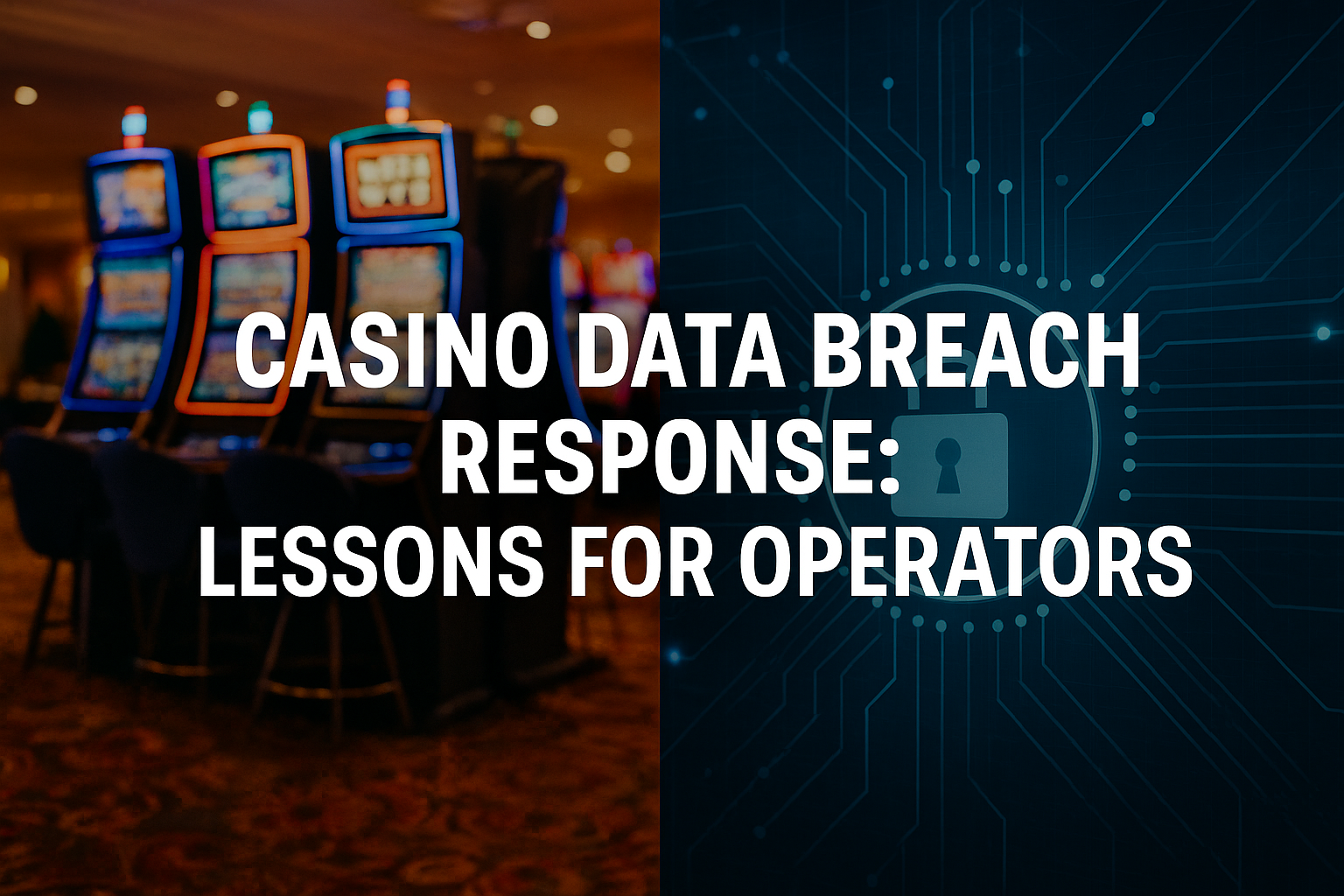Casino Data Breach Response: Lessons from Boyd Gaming
In late September 2025, Boyd Gaming Corporation revealed it had suffered a cyberattack in which unauthorized actors stole sensitive information about employees and certain other individuals. The Record from Recorded Future While operations were unaffected and the company says it expects no material financial impact, the breach spotlights a recurring theme: the weakest link in gaming security often lies in internal systems, HR data stores, and legacy infrastructure.
Every casino operator—from big chains to regional resorts—should view this as a cautionary tale in casino data breach response, regulatory exposure, and reputation risk.
What We Know: The Boyd Gaming Breach
Boyd Gaming filed an 8-K with the SEC, indicating the breach involved IT systems and that “employee data and a limited number of other individuals” were impacted. The Record from Recorded Future
The company affirmed that casino floor operations, customer-facing systems, and property infrastructure remained untouched. The Record from Recorded Future
Despite the limited scope, the incident underscores that even non-customer systems (HR records, payroll systems, internal communication) represent high-value targets for malicious actors.
Why This Breach Matters to U.S. Casinos
1. Insider systems are high-value targets
Breaches of HR, finance, or payroll systems may let attackers pivot to more critical targets (e.g., user access, vendor credentials, or property control systems).
2. Regulatory & legal exposure
Employee data usually includes PII subject to state privacy laws (e.g., Social Security numbers, birth dates). Failing to protect it can lead to legal liability, state investigations, or class actions.
3. Reputation & trust risks
Workers, partners, regulators, and the public expect casinos to maintain strong security governance across all systems—not just the gaming floor. A breach of internal systems can erode trust.
4. Cost of distraction & remediation
Even when operations are unaffected, resources must shift to forensic investigations, notification, monitoring, legal teams, and system hardening. These are hidden costs that chip away at margins.
Lessons & Best Practices in Casino Data Breach Response
Here’s a recommended blueprint to strengthen defensibility and response readiness:
1. Segment Internal Systems
Isolate HR, payroll, and other internal systems from property networks and gaming systems. Use network segmentation and Zero Trust to limit lateral movement.
2. Tightly Control Access
Enforce least privilege and role-based access to sensitive internal systems. Include MFA, periodic credential rotation, and just-in-time access where possible.
3. Monitor and Log Everything
Ingest logs from internal systems into your central SIEM. Set alerts for anomalous access (off-hours, large downloads, privilege escalation).
4. Prepare Incident Response Plans for Internal Data
Ensure your IR playbooks treat internal data breaches as seriously as customer-facing breaches. Include communication templates, regulatory considerations, and forensic procedures.
5. Privacy & Legal Strategy
Understand state-level PII protection laws (e.g. California CCPA, Illinois BIPA) and align breach notification protocols accordingly. Coordinate with legal counsel to plan for potential lawsuits or regulatory audits.
6. Employee Awareness & Insider Risk
Develop training and monitoring to mitigate risks from insider threats. Monitor for unusual internal behavior (e.g. accessing large data dumps, exporting HR files). Use DLP tools.
7. Test Response via Tabletop Exercises
Simulate internal breaches in tabletop exercises to check coordination between IT, HR, legal, and communications teams.
The Bigger Picture & Emerging Trends
- The Boyd breach is not isolated. Larger chains have faced or disclosed cybersecurity incidents (e.g., MGM, Caesars in earlier years) highlighting ongoing industry pressure.
- As casinos embrace digital platforms and integrate with cloud services, internal systems become more interconnected—and more exposed.
- Regulation and investor scrutiny of cybersecurity is growing. Public disclosures and SEC filings around cyber risk are now standard in the sector.
- Risk transfer (cyber insurance) will increasingly demand rigorous controls and response readiness before coverage is granted or maintained.
Conclusion
The Boyd Gaming breach illustrates a key principle: in casino security, internal systems are often just as critical as external ones. Missteps in HR, payroll, or vendor systems create vectors that attackers can exploit beyond your gaming perimeter.
By proactively hardening internal controls, preparing robust incident response plans, and treating internal data as a crown jewel, casino operators can turn data breach response readiness from a liability into a competitive strength.
Contact Saturn Partners to audit your internal system exposure, stress-test your breach response plans, and ensure your casino is prepared from the inside out.

